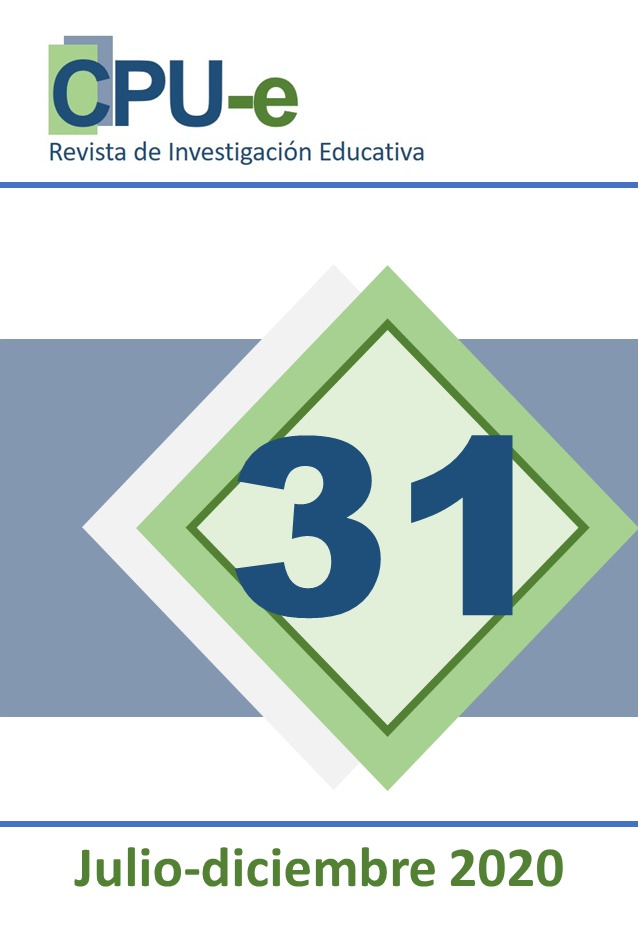Resumen
El objetivo de este trabajo fue determinar el perfil de alumnos con mayor abandono de la universidad ITESO, en programas de pregrado de nueve semestres, con el fin de mejorar la retención. Estimamos el abandono aplicando el método de Análisis de Supervivencia de Kaplan-Meier con ocho variables explicativas y un seguimiento de 12 semestres. La aplicación de pruebas de rango logarítmico a las curvas estimadas para cada categoría de las variables determinó que existen perfiles diferenciados. El perfil de mayor abandono es el de alumnos que ingresan con más de 20 años, masculinos, con promedio de preparatoria menor a 80, no procedentes de la zona metropolitana de Guadalajara, de preparatorias públicas, sin beca ni crédito, con el menor rango de puntuación en examen de ingreso y que iniciaron en programas de administración o ingenierías. Con estos hallazgos es posible detectar a los alumnos con mayor probabilidad de abandono desde su ingreso.Citas
Agresti, A. (2003). Categorical Data Analysis (3rd ed.). Hoboken: John Wiley & Sons Inc.
Ameri, S., Fard, M. J., Chinnam, R. B., & Reddy, C. K. (2016). Survival Analysis based Framework for Early Prediction of Student Dropouts. Proceedings of the 25th ACM International on Conference on Information and Knowledge Management - CIKM ’16, 903–912. doi: 10.1145/2983323.2983351
Bahi, S., Higgins, D., & Staley, P. (2015). A Time Hazard Analysis of Student Persistence: a US University Undergraduate Mathematics Mayor Experience. International Journal of Science and Mathematics Education, 13(5), 1139–1160. doi: 10.1007/s10763-014-9538-9.
Bean, J. (1980). Dropouts and turnover: The synthesis and test of a causal model of student attrition. Research in Higher Education, 12(2), 155–187. doi: 10.1007/BF00976194.
Bean, J. (1983). The Application of a Model of Turnover in Work Organizations to the Student Attrition Process. The Review of Higher Education, 6(2), 129–148. doi: 10.1353/rhe.1983.0026
Bean, J., & Metzner, B. (1985). A Conceptual Model of Nontraditional Undergraduate Student Attrition. Review of Educational Research, 55(4), 485–540. doi: 10.2307/1170245
Bound, J., & Turner, S. (2011). Dropouts and Diplomas. The Divergence in Collegiate Outcomes. In Handbook of the Economics of Education (Vol. 4, pp. 573–613). doi: 10.1016/B978-0-444-53444-6.00008-0
Braxton, J. M., Hirschy, A. S., & McClendon, S. A. (2004). Understanding and reducing college student departure. ASHE-ERIC Higher Education Report, 30(3), 108.
Cabrera, A. F., Nora, A., & Castaneda, M. B. (1993). College Persistence: Structural Equations Modeling Test of an Integrated Model of Student Retention. The Journal of Higher Education, 64(2), 123. doi: 10.2307/2960026
Cabrera, A. F., Stampen, J. O., & Hansen, W. L. (1990). Exploring the Effects of Ability to Pay on Persistence in College. Review of Higher Education, 13(3), 303–336.
Cabrera, L., Bethencourt, J. T., Alvarez Pérez, P., & González Afonso, M. (2006). The problem of University dropout. RELIEVE - Revista Electronica de Investigacion y Evaluacion Educativa, 12(2), 171–203.
COPAES. (2016). Marco General de Referencia para los Procesos de Acreditación de Programas Académicos de Tipo Superior. Mexico: Consejo Nacional para la Acreditación de la Educación Superior.
Cox, D. R. (1972). Regression Models and Life-Tables. Journal of the Royal Statistical Society. Series B (Methodological), 34(2), 187–220.
Davidson-Pilon, C., Kalderstam, J., Zivich, P., Kuhn, B., Fiore-Gartland, A., AbdealiJK, … Rendeiro, A. F. (2019). CamDavidsonPilon/lifelines: v0.23.1. doi: 10.5281/ZENODO.3555617
Imbrie, P. K., Lin, J. J. J., & Reid, K. (2010). Comparison of four methodologies for modeling student retention in engineering. ASEE Annual Conference and Exposition, Conference Proceedings.
Kaplan, E. L., & Meier, P. (1958). Nonparametric Estimation from Incomplete Observations. Journal of the American Statistical Association, 53.
Kleinbaum, D. G., & Klein, M. (2012). Survival analysis : a self-learning text. New York, NY: Springer.
Lassibille, G., & Gómez, L. N. (2008). Why do higher education students drop out? Evidence from Spain. Education Economics, 16(1), 89–105. doi: 10.1080/09645290701523267
Muñoz, B. (2017). Análisis de la deserción en las licenciaturas de la FCFM-BUAP mediante modelos de supervivencia. Benemérita Universidad Autónoma de Puebla.
Murtaugh, P. A., Burns, L. D., & Schuster, J. (1999). Predicting the Retention of University Students. Research in Higher Education, 40(3), 355–371. doi: 10.1023/A:1018755201899
OECD. (2019). Education at a Glance 2019. In Education at a Glance 2019: OECD Indicators. doi: 10.1787/f8d7880d-en
pandas development team, T. (2020). pandas-dev/pandas: Pandas. doi: 10.5281/zenodo.3509134
Pascarella, E. T., & Chapman, D. W. (1983). A multiinstitutional, path analytic validation of Tinto ’ s model of college withdrawal. American Educational Research Journal, 20(1), 87–102. doi: 10.3102/00028312020001087
Pascarella, E. T., & Terenzini, P. T. (1980). Predicting freshman persistence voluntary dropout decisions from a theoretical model. The Journal of Higher Education, 51(1), 60–75. doi: 10.2307/1981125.
Shuman, R. B. (1956). College Dropouts : An Overview. 29(8), 347–350.
Sosu, E. M., & Pheunpha, P. (2019). Trajectory of University Dropout: Investigating the Cumulative Effect of Academic Vulnerability and Proximity to Family Support. Frontiers in Education, 4, 6. doi: 10.3389/feduc.2019.00006.
St. John, E. P., Paulsen, M. B., & Starkey, J. B. (1996). The nexus between college choice and persistence. Research in Higher Education, 37(2), 175–220. doi: 10.1007/BF01730115.
Tinto, V. (1975). Dropout from Higher Education: A Theoretical Synthesis of Recent Research. Review of Educational Research, 45(1), 89–125. doi: 10.3102/00346543045001089.
Tinto, V. (2012). Leaving college. [electronic resource] : rethinking the causes and cures of student attrition.
Torres, V. (2006). A Mixed Method Study Testing Data-Model Fit of a Retention Model for Latino/a Students at Urban Universities. Journal of College Student Development. doi: 10.1353/csd.2006.0037.
Vallejos, C. A., & Steel, M. F. J. (2017). Bayesian survival modelling of university outcomes. Journal of the Royal Statistical Society. Series A: Statistics in Society, 180(2), 613–631. doi: 10.1111/rssa.12211.
van der Zanden, P. J. A. C., Denessen, E., Cillessen, A. H. N., & Meijer, P. C. (2018, February 1). Domains and predictors of first-year student success: A systematic review. Educational Research Review, Vol. 23, pp. 57–77. doi: 10.1016/j.edurev.2018.01.001.
Wang, P., Li, Y., & Reddy, C. K. (2019). Machine learning for survival analysis: A survey. ACM Computing Surveys, 51(6), 1–39. doi: 10.1145/3214306.


